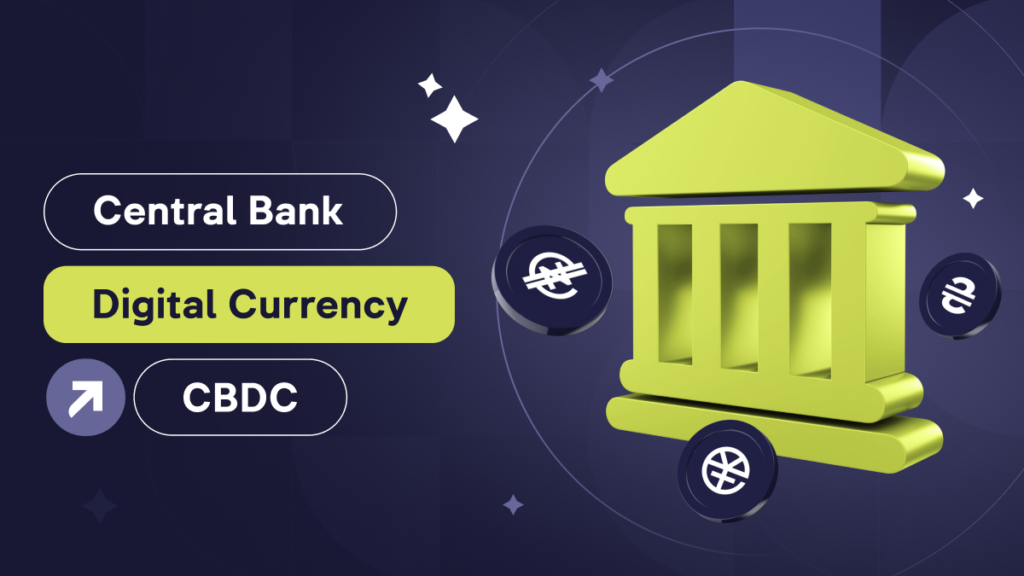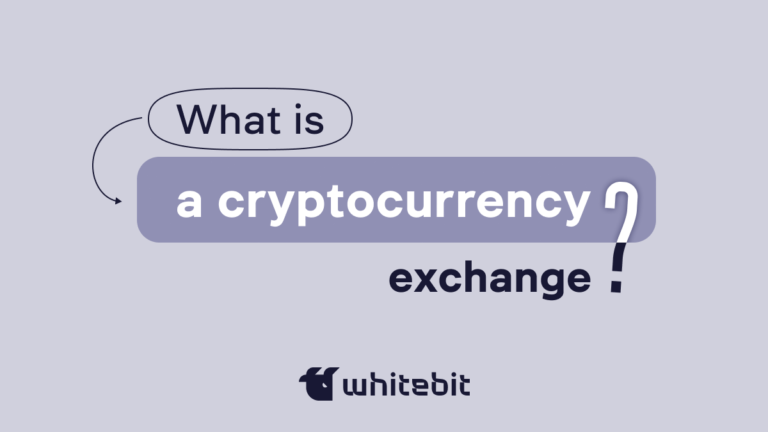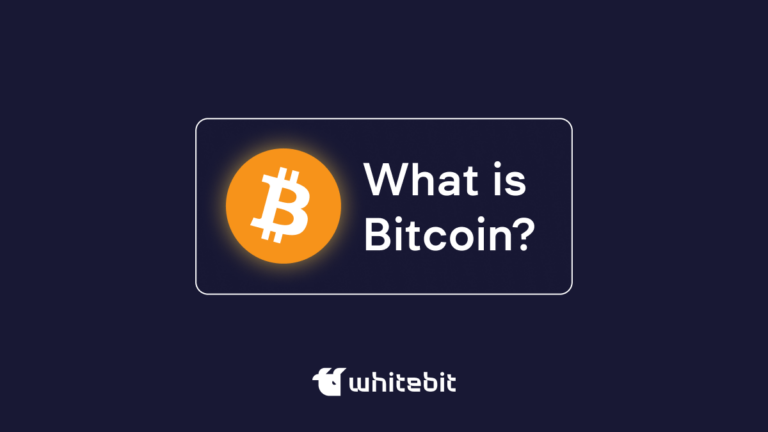What is CBDC (Central Bank Digital Currency)

Content
- What is CBDC Money: Digital Currency Central Bank Goals
- Increase efficiency and accessibility of financial services
- Strengthening The Control And Security Of The Financial System
- Transition To a Cashless Economy
- Types of Centralised Digital Currency (CBDCs)
- How Are Government Digital Currency (CBDCs) Developed?
- Examples of Countries with CBDC
- Pros and Cons of Central Bank Digital Currency
- The Difference Between E-money, Fiat, Digital Coin and Virtual Coin
- The Future of Central Bank Digital Currency
- Conclusion
- FAQ
The world of financial technology has been undergoing significant change in recent years, and central bank digital currencies (CBDCs) have been at the forefront of this transformation. In an era of digitalization and the rapid development of blockchain technology, government institutions are beginning to consider issuing their own digital currencies. But what is digital currency, and what changes can CBDC currency bring to the global economy? In this article, we look at what a digital currency is, what digital money is and how to use it, and when will digital currency replace money.
A central bank digital currency CBDC is a digital form of national currency issued and regulated by a central bank. CBDC is a central bank liability that can be used to make payments, store value, and other financial transactions while providing fast, secure and low-cost transactions for both consumers and businesses.
What is CBDC Money: Digital Currency Central Bank Goals
Increase efficiency and accessibility of financial services
E-money in today’s world improves the efficiency of payment systems by enabling faster and cheaper transactions. It strengthens financial inclusion by providing access to financial services to previously excluded people, including those in remote regions, contributing to economic development and poverty reduction.
*Exchanges allow you to buy cryptocurrency and exchange it using a crypto converter between CBDC and the most popular cryptocurrencies.
Strengthening The Control And Security Of The Financial System
The introduction of central banking digital currency provides central banks with a powerful tool to counter illegal financial transactions. Digital currencies allow transactions to be tracked with high transparency, making it difficult for money laundering and terrorist financing to occur. This significantly increases the level of security of the financial system. In addition, CBDC crypto can stabilize monetary policy by allowing central banks to directly influence the money supply and interest rates. This facilitates a more accurate and rapid response to economic challenges, increasing the financial system’s resilience to crises and promoting stable economic growth.
Transition To a Cashless Economy
With the development of digital technology and the growing popularity of cashless payments, CBDC digital currency represent the next logical step in the evolution of cash. The transition to digital currencies reduces the need to use cash, which is convenient for users and reduces the cost of producing, storing, and transporting banknotes and coins. It also reduces the risks associated with cash’s physical storage and movement. Thus, CBDCs contribute to creating a more efficient and modern financial infrastructure.
Types of Centralised Digital Currency (CBDCs)
- Retail CBDCs are designed for the public, i.e., individuals and businesses. These digital currencies act as an electronic form of cash and can be used for everyday purchases and payments. Retail CBDCs provide access to secure and convenient means of payment, especially for those who do not have access to traditional banking services. They can help increase financial inclusion, speed up transactions, and reduce transaction costs.
- Wholesale CBDCs (Wholesale CBDCs) are designed for financial institutions and financial market participants, such as banks and other licensed financial institutions. These digital currencies are used for interbank settlements, cross-border payments, and other large financial transactions. Wholesale CBDCs can significantly improve the efficiency and security of financial transactions, reduce counterparty risk, and simplify liquidity management.
- Hybrid CBDCs combine elements of both retail and wholesale digital currencies. These currencies can be used by both the public and financial institutions, providing a single solution for all types of users. Hybrid CBDCs offer versatility and flexibility, allowing central banks to adapt to market needs and economic conditions.
How Are Government Digital Currency (CBDCs) Developed?
The development of central bank digital currencies (CBDCs) is a complex and multistep process that involves research, design, testing, and implementation. It is based on two main models: token-based CBDC and account-based CBDC.
Token-based CBDC
Token-based central banks digital currencies work similarly to cash, but in a digital format. They are digital analogs of coins and bills that can be transferred from one user to another without the need for intermediaries.
Key features:
- Anonymity and privacy: Users can conduct transactions anonymously, as they do with cash. This ensures a high level of privacy.
- Decentralization: Transactions can be conducted directly between users without the involvement of banks or other financial institutions.
- Security: Using advanced cryptographic techniques to protect transactions and prevent token counterfeiting.
- Flexibility: Tokens can be used online and offline, especially in regions with limited internet access.
Account-based CBDCs
Account-based CBDCs function on the principle of electronic bank accounts. Electronic money is when a user has an account with a central bank from which all transactions are made.
Key features:
- Transparency and traceability: The central bank can track all transactions in real-time, which facilitates the monitoring and prevention of financial crimes.
- Money supply management: The central bank can more effectively manage the money supply and conduct monetary policy.
- Security: High security by using advanced technologies to protect data and prevent unauthorized access.
- Integration: Ease of integration with existing financial systems and the ability to make instant settlements between different market participants.
Sample CBDC development process:
- Research and Analysis: Central banks research to determine the needs and feasibility of implementing CBDC. They also analyze various models and their potential impact on the economy.
- Design and prototyping: System architecture is developed, and prototypes are built to test various aspects of CBDC.
- Testing and Piloting: Conducting pilot projects to identify potential problems and test the technology in real-world conditions.
- Implementation and Scaling: Gradual implementation of the CBDC based on the results of the pilot projects and gradual scaling up of use.
Examples of Countries with CBDC
Let’s look at a small list of countries that use e-currencies.
Ukraine: E-hryvnia
Electronic currency in Ukraine is being actively developed by the national bank. In September 2021, the National Bank launched the E-Hryvnia project to determine the need for large-scale issuance of a digital form of hryvnia in Ukraine. The NBU conducted the first e-hryvnia experiment in 2018, becoming one of the first central banks to test digital money. As part of the pilot project, the National Bank issued 5,443 Ukrainian CBDC coin for use only by the regulator’s employees. Virtual money in Ukraine is being prepared for a second experiment with its use. CBDC launch date is expected by the end of 2024.
China: Digital yuan (e-CNY)
Although cryptocurrency is banned in China, what is virtual money there not from rumors. China is one of the leaders in the development and implementation of CBDC. The digital yuan, also known as e-CNY, has been actively testing since 2020. The Central Bank of China (People’s Bank of China) is conducting pilot projects in several major cities such as Shenzhen, Suzhou, and Beijing. The digital yuan is used for a variety of transactions, including payment for goods and services, as well as for government subsidies.
Bahamas: Sand Dollar
The Bahamas became the first country to officially launch a CBDC, the Sand Dollar, in October 2020. Sand Dollar was designed to improve financial inclusion and make financial services accessible to all archipelago residents, especially in remote areas. The digital currency is used for various payments and transfers, making financial transactions on the islands easier.
Sweden: E-krona
Sweden is actively exploring the implementation of CBDC through the e-krona project. The Riksbank (Sweden’s central bank) is conducting pilot projects to define the impact of digital currency on the country’s financial system. The main goal of e-krona is to ensure stability and accessibility of payment systems in the face of declining cash usage.
Nigeria: eNaira
Nigeria launched its digital currency, eNaira, in October 2021. The Central Bank of Nigeria aims to improve financial inclusion, speed up payments and reduce transaction costs with eNaira. The eNaira is used for various payments and remittances, boosting the country’s digital economy.
Uruguay: The Digital Peso
Uruguay was among the first countries to launch a pilot project for digital currency. The digital peso pilot project, launched by the Central Bank of Uruguay in 2017, tested the capabilities and benefits of digital currency to improve the payment system and financial inclusion.
Pros and Cons of Central Bank Digital Currency
Advantages of CBDC
The use of CBDC offers several significant benefits:
- Improved financial inclusion: Access to financial services for all segments of the population, including those who do not have access to traditional banking services.
- Improved payment efficiency: Fast and inexpensive transactions.
- Enhanced control and security: Centralized control over transactions better combats money laundering and terrorist financing.
- Monetary policy support: Ability to manage money supply and interest rates more precisely.
Disadvantages of CBDC
Despite the advantages, CBDCs have their disadvantages as well:
- Privacy: Centralized control can lead to reduced user privacy.
- Technical and Infrastructure Challenges: Significant investments in technology and infrastructure are required to ensure the reliable operation of CBDCs.
- Cybersecurity Risks: Potential for cyberattacks and data breaches.
- Potential impact on the banking sector: CBDCs may change traditional banking models, requiring the banking industry to adapt to the new environment.
Cryptocurrency price volatility challenges integrating cryptocurrency converters with fiat e-money such as CBDCs, requiring additional measures to ensure transaction stability and security.
The Difference Between E-money, Fiat, Digital Coin and Virtual Coin
What is digital money, the difference between fiat and non-fiat e-money, and what other types of cryptocurrencies exist?
Digital Currency
What is digital coin? Digital currency is a form of currency that exists only in digital format. It can be centralized (CBDC) or decentralized (cryptocurrencies) and is designed for use in digital transactions. The difference with cryptocurrency is that digital currency, especially CBDC, is issued and controlled by central banks or government agencies, which ensures its legal status and stability. On the other hand, cryptocurrencies such as Bitcoin (BTC) and Ethereum (ETH) are decentralized and managed by a network of users without a central regulatory body.
Fiat Currencies
Fiat money is traditional money in bills and coins issued and controlled by central banks. It is widely used for everyday transactions, but is subject to inflation and incurs costs to produce and store. CBDCs (Central Bank Digital Currencies) exist in digital form and are also controlled by central banks. They provide fast and cheap transactions, improving financial inclusion and security. The main differences lie in the form of existence and transaction efficiency, where CBDCs provide modern and cost-effective solutions. Only time shows will CBDC replace cash or not.
Electronic Currencies
Electronic currencies are money stored and used to make non-cash payments. Simply put, e-currencies are funds in bank accounts and electronic wallets.
This still includes altcoins, anonymous cryptocurrencies, and other types of tokens. For example, stablecoins, linked to the value of fiat currencies, can serve as a bridge between traditional monetary systems and the world of cryptocurrencies, providing stability in the face of high volatility in crypto-asset prices.
Virtual money
Virtual money is digital money created for use within a specific virtual environment, such as online games or social networks. It does not have legal tender status and is only used within the respective platform.
The Future of Central Bank Digital Currency
Modern e-money can significantly change the financial ecosystem. It can improve financial inclusion by giving more people access to banking services. CBDCs can make payments faster and cheaper, reducing transaction costs and making financial transactions more efficient. It can also strengthen controls and transparency to combat financial crime and improve monetary policy management. However, successful implementation will require addressing cybersecurity and data privacy issues.
Conclusion
In this article we examined what are CBDCs, and why they are important. Digital money represents new horizons for the global economy. They offer innovative solutions for financial transactions, and while some countries are already actively exploring and testing CBDCs, others are just beginning their journey. Whatever the case, CBDCs are becoming an inevitable part of the future of finance, and their successful implementation will determine the direction of economic development for decades to come. E-money and cryptocurrency are not only our future, but already our present.
FAQ
CBDC stands for Central Bank Digital Currency. It is a digital form of fiat money issued and regulated by a country's central bank.
The start date for CBDCs varies by country. Some countries, like China, which has its digital yuan, have already begun pilot programs, while others are still in the research and development phase. The timeline for full implementation depends on the specific central bank and its regulatory framework.











